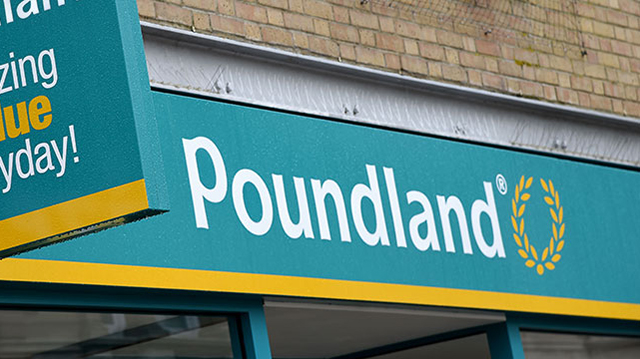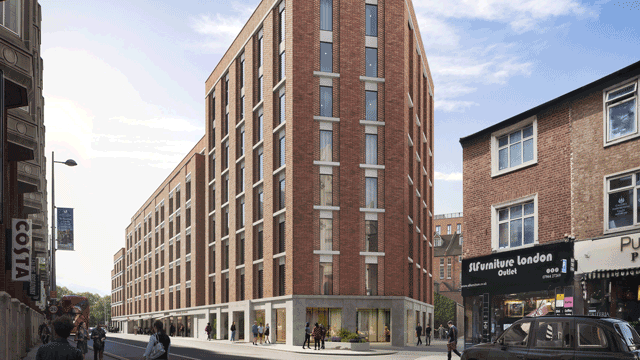The Meadowhall centre’s grip on South Yorkshire’s shopping sector grows ever stronger. As a result, reports Lauren Mills, the county’s traditional shopping locations are redefining their roles.
The good times continue to roll at Stadium Development’s 1.5m-sq ft Meadowhall centre. But, as Lambert Smith Hampton’s Guy Rusling points out, this has been at the expense of Sheffield’s established shopping core. “The real impact has been on turnover,” he says.
Sheffield council’s Stuart Reynolds agrees. He says that when the development got consent, it was supposed to account for 13% of the city’s retail business. But, as he now admits: “Some forecasts suggest that it has sucked out 20% of the city’s turnover.”
However, Knight Frank & Rutley’s Steve Hodgson believes that Meadowhall is not solely to blame. He contends that these trends are a result of the combined effect of the shopping giant and the recession. He also claims that Sheffield’s hold on the region’s shopping was already teetering when Meadowhall was merely a twinkle in Eddie Healey’s eye.
The actual shape of the city’s retail core – which is elongated to say the least – does not help, suggests Keith Cardale Groves’ Peter Nunweek: “There is a need for better linkage for shoppers from the bottom of the Moor to Fargate and the Haymarket.” Nunweek’s ideal solution is for the link to be pedestrianised and covered. “But this would be difficult – and expensive,” he admits.
In the meantime, the Moor continues to fulfil an important role within Sheffield’s shopping hierarchy. The street took a knock when Marks & Spencer closed its outlet there, and news that BhS is trying to leave has further blighted its shopping appeal. Nevertheless, zone A rents are holding out at about £60.
The once-thriving Haymarket also has its problems. Clayform Properties recently scrapped its plans for a retail scheme there, and a number of units are vacant. But, as Rusling points out, the street’s prospects are brighter pending the redevelopment of Castle Square. The square’s infamous “hole in the road” roundabout is to be filled in to allow the creation of a new piazza. Following this, C&A, the Co-op and House of Fraser, all of which face on to the square, plan to extend their shop fronts to take advantage of the anticipated increase in pedestrian flow.
Following Clayform’s departure, Lunafield Developments has stepped into its shoes to carry out a new development fronting Angel Street, Market Place and High Street. Rusling says: “The general plan is to redevelop the former Schofields department store, together with a wholesale redevelopment of the entire site, which can take about 100,000 sq ft of retail.” He adds that a prelet for a 22,000-sq ft unit within the scheme has already been secured.
But Nunweek wonders whether the city centre actually needs additional retail floorspace. He believes that a thorough overhaul of what is already there would provide a better solution.
Rusling, however, speaks for many when he voices doubts as to whether this would give the city the fillip it desperately needs. He claims that MEPC’s Orchard Square, in the heart of the city centre, is one of the main casualties of increased external competition. “It let well at the outset, but there has been a significant change in tenant profile.”
The 99,000-sq ft scheme is anchored by Virgin Megastore, Index and Waterstone. A spokesman for MEPC says that the last lettings achieved £70 zone A. But, following a nil increase at arbitration for Waterstone’s unit, the 1992-93 round of rent reviews has not been implemented. Nevertheless, MEPC recently took the opportunity to buy the 150-year groundlease of its 99,000-sq ft Orchard Square at Fargate, for nearly £1m, from Sheffield city council. Lambert Smith Hampton advised the council.
Elsewhere in the city centre, Great Portland Estates has paid £4m for the freehold of units 1-5 Barker’s Pool. Tenants are Mothercare, Derbyshire Building Society, Early Learning Centre and Hammicks Bookshops, plus a cinema let to Rank. The investment produces £380,000 pa, reflecting an initial yield of 9.25%. Mason Philips advised the purchaser, while Colin Buckle acted for the vendor, Eagle Star.
Unlike the rest of the city centre, prime pitch on Fargate is faring remarkably well. Rents in the street have settled following Wallis’ lease renewal, about three years ago, which achieved £190 zone A. But Rees describes this as a one-off deal and estimates that today’s values are closer to £115 or £120 zone A.
But even Fargate lags a long way behind Meadowhall in rental terms. In Meadowhall’s prime High Street mall, rents now exceed £190 zone A and recent newcomers include Birthdays and J D Sports.
Meadowhall’s retail park is also making good progress. Tenants include MFI, Aldi and Toys R Us and rents range between £8 and £14 per sq ft. Letting agent Smith Young reports that only one 5,000-sq ft unit is currently available. Costco is soon to join the fray. It is about to build a 140,000-sq ft warehouse club nearby.
Stadium intends to build on these successes. The developer has just announced plans to build a 110,000-sq ft leisure development next to Meadowhall. Known as Bourbon Street, the scheme will provide 13 units on two levels, housing a range of themed bars, restaurants and cafes. Although the scheme still awaits planning consent, Stadium confirms that terms have already been agreed with several retailers: McKinley’s Station, an Australian steak bar, will take 14,000 sq ft; the Bourbon Street Pie Bakehouse has agreed terms on 14,000 sq ft; and Ronnie Scott’s has signed up for 8,000 sq ft. If all goes to plan, construction should start in the spring, with completion due at the end of summer 1995.










